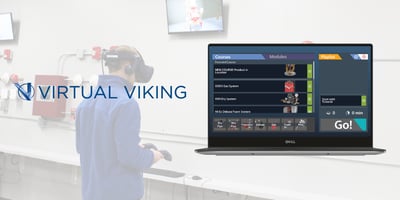Well that is quite a title for a training article, but it is only half of the quote! The other half...
Advancing the Industry: Training the Next Generation
I don’t know when I became part of the “senior circuit” of this industry, but my fellow “seniors” and I can likely agree how very different the training environment was before Microsoft got ahold of it. Slides and overhead projectors were the delivery methods of choice, and textbooks, handbooks and product manuals were the resources. The training was delivered in week-long sessions that provided a “9 sprinkler, K28 at 40 psi” flow of information leaving the participants overwhelmed with material and not sure how or when they would use it. Then came Microsoft PowerPoint, which revolutionized how training materials were developed and delivered. A whole new generation of learners were exposed to “three-per-page” handouts, animations and embedded videos. This had its advantages in the development of training but was too often abused by the developer, resulting in the torturous “death-by-PowerPoint”.
The next generation came, and the boundaries were pushed once more. This new group of learners wanted information accessible, with immediate applicability to their work in a format that engages their senses and meets them in their preferred learning environment. This generation of learners currently makes up approximately 36% of the global workforce. They are diverse, entrepreneurial and educated. What’s more, they are “digital natives” – more tech-savvy individuals than their predecessors who can’t remember a time without immediate access to information. As my brother likes to put it, we live in an age when we never have to “not know” something... Just by watching this generation on virtual reality learning platforms compared to our more seasoned students, observers see a fairly clear indication of the ease at which they navigate and consume the learning.
But being so digitally reliant may also come with a cost. Digital natives might lack the interpersonal communication skills they will need to succeed in the workplace because they spend so much of their time interacting and communicating with their devices instead of with people face-to-face. This can be problematic in an industry such as this – an industry that is so relationally-oriented and where a level of technological prowess is equally as important as knowing how to communicate effectively with colleagues, clients and customers.
So how can organizations strike this balance between digital prowess and customer relationship building? It comes down to creating a learning program that has their unique preferences and needs in mind—one that provides resources to improve their interpersonal skills but delivers these resources in a way that resonates in the digital age.
Focused and applicable learning is the formula for connecting with the average digital native. For instance, broad-scope programs on topics like preaction systems are panned over in search of a more specific focus, such as the functioning or repair of a pressure operated relief valve… These digital natives prefer content that’s fast and self-paced. With the average human attention span clocking in around eight seconds, the content must strike a chord within those first few moments.
With this in mind, let's take a look at some of the learning formats and platforms that are available and in use that may attract talent to your company and customers to your product.
In-person Seminars
Don’t be misled: in-person learning is still a highly valued source of learning, and hands-on, collaborative and technical learning is sometimes the best way to build on skills that are introduced in other platforms. With recent events across the globe causing many to work and learn remotely, the desire for connection and personal interaction with the topic has driven a surge back to in-person seminars.
Webinars
Still a mainstay of digital learning, these allow for interaction with the topic and facilitator and remain quick and easy to deliver (but sometimes lack that engagement and connection).
Podcasts
The podcast format allows learners to listen in to the conversation of experts on topics that are of interest or necessity to their work – there may even be a call-in function that allows for direct interaction through questions and answers.
Micro-Learning
Micro-Learning is a way of teaching and delivering content to learners in bite-sized (3-5 minute) bursts at the point of need, with a focused and specific learning outcome. The learner is in control of what and when they are learning and can complete their training at a time and place that suits their schedule. It’s the more engaging, less time-consuming and a cheaper-to-produce sibling of regular e-learning, like webinars. While it’s not the best solution for every training need, it's a surprisingly effective one for corporate and commercial training.
Nano-Learning
Due to the popularization of social media platforms such as TikTok and Snapchat, fast-paced content is becoming increasingly prevalent, with students now learning more from short videos on specific topics than from traditional lesson formats.
Nano-Learning is self-contained, offering small, highly targeted nuggets of information with a single objective to learners usually in less than two minutes. There is no interaction with the instructor, as it is carried out via electronic media. It can contain a wide variety of multimedia such as text, video, sound and images, all of which keep learners engaged. Nano-Learning is also very responsive as it can be viewed on a range of different devices.
Gamification
Broadly defined, gamification is the process of defining the elements that comprise games using those same elements in a non-game context to influence behavior. In other words, gamification is the introduction of game elements into a traditionally non-game situation. Gamification can be developed as a component of in-person training, or through the use of virtual reality, and this scenario seeks to motivate learners by using video game design and game elements in learning environments. The goal is to provide a totally immersive environment to increase engagement by capturing the interest of learners and inspiring them to continue learning.
With the influx of these new learners within their ranks, as well as their clients and customers, companies would do well to consider the best way to promote learning and development on their products and services. This generation grew up in a different environment than the generations before them, but by understanding this group’s strengths and potential deficits, organizations can set up digital natives, and themselves for career success.







